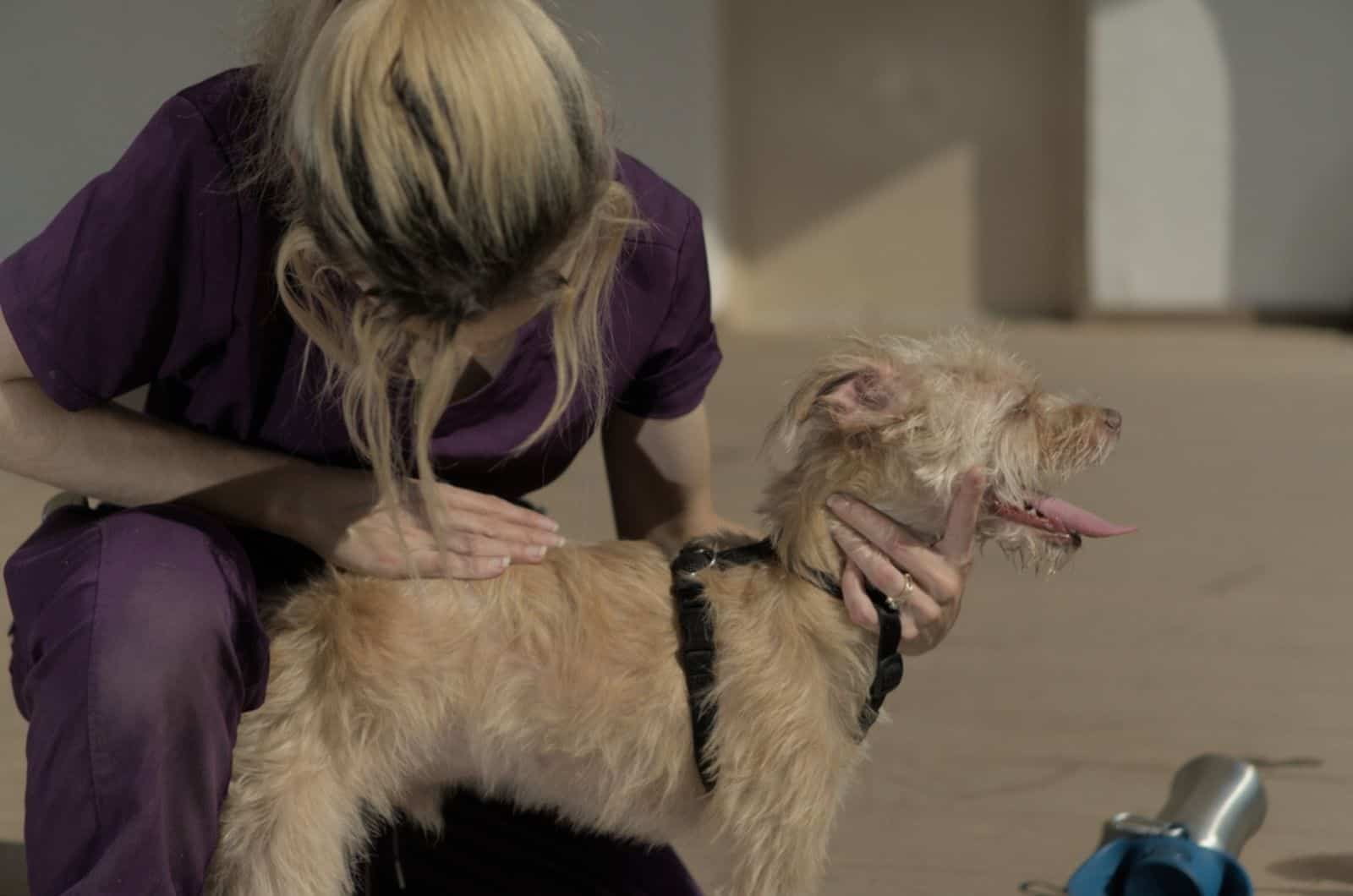Dogs come in all shapes, sizes and colors. The colors in particular can vary and come from a variety of sources, but vitiligo is one of the more uncommon ones.
It’s something that’s quite rare among pets, which is why it’s often so shocking to see it unfold in front of you.
Your dog’s skin starts to lose its pigmentation at a steady pace, either all over the body or in random patches.
At first glance, you may believe it to be something dangerous, but I assure you that vitiligo itself is quite harmless, it just gives your pupper a brand new look.
While said look may be unappealing depending on dog breed, it’s nothing to be worried about.
It can, however, be a potential indicator, a reaction to an autoimmune disease which makes it easier to discern.
What Causes Vitiligo In Dogs?

The primary cause of vitiligo in dogs and any other species really is their melanocytes dying off due to a hereditary gene.
Stress is another potential factor that, just like with gray hairs in humans, can be the cause of temporary vitiligo in dogs.
Exposure to toxins is another one, though that one is exceptionally rare.
It can also be an autoimmune response where the body considers the melanocytes as foreign bodies and acts to destroy them.
The latter is often a more aggressive version of vitiligo but no more dangerous than the other one.
What Types Of Vitiligo Are There?
The type of vitiligo doesn’t change its danger level, but rather whether the source of it only affects one large area or a number of smaller patches littered across the body.
This is true for dogs, humans and any other species susceptible to it.
How Can I Tell If My Dog Has Vitiligo Or Not?

The symptoms of vitiligo are relatively easy to spot, though it depends on how much fur your dog has on him.
Regardless, it normally starts before age 4 or so for dogs with a few small patches of pinkish-white skin after which it continues to spread further.
In most cases, the fur also ends up suffering from depigmentation and starts fading to a whiter color.
The whole process usually completes in about a quarter to half a year while it progressively spreads and may not take all of the melanocyte out.
Your dog may be left with a few patches of unaffected skin and fur here and there.
The most common area that vitiligo starts appearing on first is the dog’s head, the snout and face primarily before spreading out further so it shouldn’t be difficult to notice.
What Should I Do If I Notice Signs Of Vitiligo On My Dog?

If your pooch starts showing clear signs of vitiligo, you still ought to take him to a vet for a checkup.
While the vitiligo itself is harmless, the cause of it could be caused by an underlying health issue which can prove to be dangerous on its own.
The likely health causes include:
- Stress
- Autoimmune disease
- A toxin within the body
If it’s either of these three, then your vet will prescribe the appropriate treatment to your dog.
Should the cause of the vitiligo fade, your furry friend’s skin and fur should return to normal over time.
However, if the cause turns out to be hereditary, then the vitiligo areas are likely to stay.
Your dog’s vet may give you the option of a few treatments to slow the process down, but there’s no definite cure for it.
Are There Any Lifestyle Changes That Can Help Reduce The Effects Of Vitiligo?

Definitely. While none of it is necessary considering your dog will be just fine with hereditary vitiligo, you can still try and reduce its effects.
More Time Outside
The most common recommendation that you’ll receive is allowing your pupper to spend more time out in the sun in hopes of rebuilding the lost melanocytes.
Reducing Stress
Seeing as stress is one of the likely causes of vitiligo, it pays to help your dog feel more comfortable and relaxed.
It may reduce the effects of vitiligo or at least slow them down if your canine companion is going gray from worry.
A Change Of Diet
The final recommendation that you’re likely to be offered is to add more omega-3 fatty acids to your dog’s diet as well as a little bit of vitamin C.
That’s because omega-3 fatty acids are a staple for good skin and fur health and could help improve its quality, somewhat repairing the damage done to it.
Are Some Dog Breeds More Prone To Vitiligo Than Others?

Some are, yes. A select few in particular, and these are:
- Dachshunds
- Old English Sheepdogs
- German Shorthaired Pointers
- Golden Retrievers
- Yellow Labs
- Siberian Huskies
- Rottweilers
- Doberman Pinschers
- Belgian Tervuren
- German Shepherds
As to why, it’s not quite known yet, but if the parent has vitiligo, the offspring is likely to have it too as it is a hereditary condition.
In Conclusion
Vitiligo in dogs isn’t anything overly dangerous, but can be an indicator of a potential problem.
If you start noticing the first signs of vitiligo on your furry best friend, take him to a vet for a checkup just in case the cause of the issue is an underlying health problem.
If it turns out to just be a hereditary thing, then you and your dog will be alright.
However, if it’s any of the other aforementioned causes like stress, an autoimmune disease or toxic exposure, then follow the advice that your doctor gives you and, in most cases, once the cause of it disappears, the vitiligo affected areas should recover as well.
In rare cases, it may stay as a permanent condition, but it’s highly unlikely.
Regardless of what happens and how it shifts your dog’s overall appearance, it’s still your best bud and he shouldn’t be treated any differently over it.
Until next time, pet parents.
RELATED LINKS:
